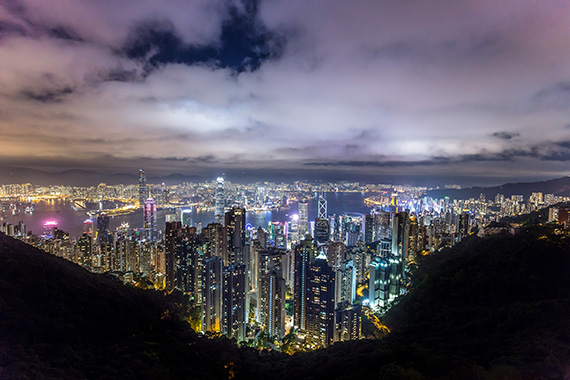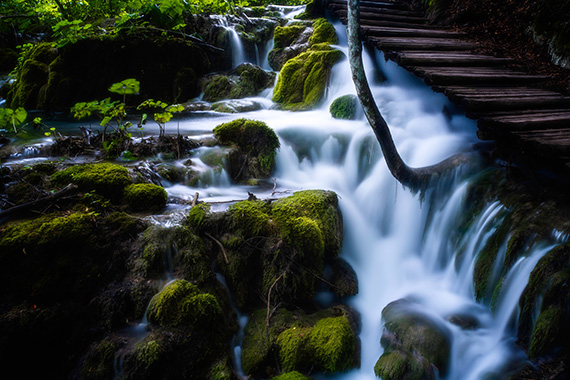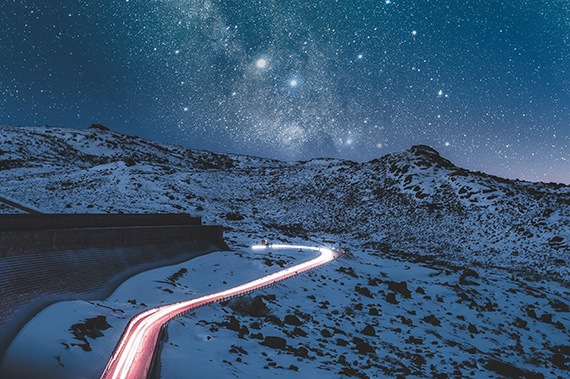Camera technology has advanced so much that just about anyone can take good photos. (Not necessarily great photos–that has more to do with composition, subject matter, effective use of light and shadow, etc.) However, if there’s one item that helps in taking better shots, it’s the humble tripod. Many of us believe that a tripod is nothing but an extra item that helps us stop camera shake. With the high ISO capabilities and faster shutter speeds of new cameras, why do we need a tripod?

Photo by Denys Nevozhai
The most obvious benefit of a tripod is that it affords stability to the camera and avoids camera shake by the operator in those situations where longer exposure times are necessary. Not many of us can hold a camera steady below a 1/60 of a second shutter speed, so we have no chance of avoiding camera shake when the exposure time could be seconds or minutes or sometimes hours in length. Examples of these times are:
- night shots
- star trails
- fireworks displays
- moon shots
- cityscapes
- vehicle movement where blurring the lights is sought
- motion blur of waterfalls, sports action, or ocean waves
- low light conditions without the use of flash
We all like to produce photos that are as sharp as we can get them. The tripod assists in obtaining clear focus, especially if we use timer delays or remote shutter releases. Even pressing the shutter button can cause the camera to shake.
Talking about timer delays, the tripod is a boon when making delayed action movies. Several hundred or thousand individual photos of an object are shot at predetermined intervals and run together to give those amazing movies of flowers opening, cloud movement or of decaying objects. The camera not only needs to be steady but to be in the same position for each shot.
If you are taking panorama shots or action shots where a steady panning motion is needed, the tripod is a must. A tip I picked up along the way is to use a large elastic band on the arm of the tripod head. Pulling on the elastic band, when panning, reduces any jerkiness of movement which produces a good overall result.
If you are into HDR shots, you will need a tripod for auto bracketing. This allows you to take several identical shots of the subject at different exposures. When you process the shots in your favourite image editing software, they can be combined to produce those wonderful shots where everything is dynamically exposed.

Photo by George Alexandru Novac
I am an ardent macro photographer and there is nothing more frustrating than trying to get a really small subject, such as an insect, into focus. All too often, the insect’s eyes are in focus but other areas on the insect, which are marginally further away, are too blurry. To overcome this I use small aperture settings to give a large depth of field, which in turn means slower shutter speeds. A tripod comes in handy in these situations. I also use sliding bracket attachments where the camera sits on the bracket and where I can finely adjust the camera movement in two planes. I can produce some really finely focused images this way.
One way that a tripod is useful, and not necessarily in an obvious way, is that it gives us time to compose our shots instead of taking instant hand held snap shots wherever we are. While this has its place in photography, we sometimes need to slow down, stand back and fine tune our composition to be able to produce dramatic landscapes, for example.
Another less obvious use of a tripod is camera placement. Capturing low level shots or shots above eye level can be achieved with a tripod without having to lie on the ground or climb a step ladder.
Tripods are also versatile in that they can double as light stands, microphone stands, or stands for reflectors or flash units. I have even heard of one photographer using a tripod as a weapon to defend himself from a vicious dog!

Photo by Ricardo Rocha
A final note is that if you find the tripod a bit of an encumbrance to carry around, considered a monopod. These can double up as a walking stick and are nearly as good as tripods. There are other tripods on the market which fold down to the size of a ruler and snap open in the fixed leg position when needed.
Tripods are a wonderful accompaniment to our camera equipment, and we should all be encouraged to make more use of them.
About the Author:
Geordie Parkin keeps a website about wildlife photography, pet photography or general questions about digital photography (photopress brianparkin). Parkin is a photographer based in Forest Lake, Qld in Australia.
Like This Article?
Don't Miss The Next One!
Join over 100,000 photographers of all experience levels who receive our free photography tips and articles to stay current:






My sister loves taking pictures and I am trying to find a good photography gift for her birthday coming up, so I am glad that I found this article! I did not realize that a tripod is so beneficial for night photography including moon and star shots. Plus, in my opinion, a tripod will allow her the time to set up her shot so that she can enjoy the nature around her before taking the photo.
I inadvertently discovered that a tripod can sometimes help in low light situations, collapsed and folded. I was leaving Cape Royal, Grand Canyon, after shooting some sunsets. I was trying to beat the rush back to the lodge, so I left a little early. Instead of tearing down completely, I collapse by Manfrotto 290 two thirds of the way and threw it over my shoulder. At that time, the ball head was tilted about 45 degrees down. About halfway back to the parking area, two potential shots came into view…another of the sunset to the west of the trail, and one of the full moon to the east. Nothing spectacular, but still interesting. I didn’t want to prep all over for two shots and then get run over by stampeding tourists, so I grabbed the tripod by the ball head spindle, framed, and shot. I was surprised to find that the tripod worked well as a counterweight….hardly any shake……and I have Parkinson’s!! I took a number of hand held shots in that light, and while none turned out to be anything special, I was able to take very clear, focused, shots.
While I doubt that this is a viable technique to use frequently, I still resort to this configuation when changing location if I think there is a chance for good, but fleeting, shots to just pop up.